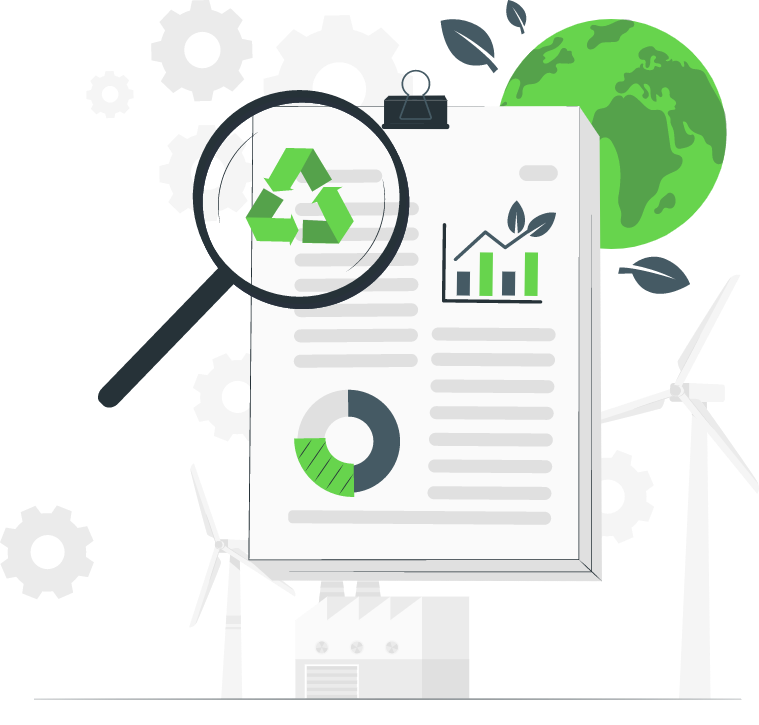Calculating a carbon footprint
Why is it important to know the carbon footprint?
Calculating a carbon footprint allows to understand the impact of a company, product or service on the climate. There are at least a few reasons why an organization should measure its carbon footprint:
01
Sustainability information reporting
From 2024, the group of entities obliged to publish information related to sustainable development, together with the financial statements, will be increased. Requirements regarding the disclosure of data in the field of environmental protection, social policy and corporate governance will be introduced. These changes result from the implementation of the directive of the European Parliament and Council (EU) 2022/2462 of December 14, 2022. Selected issues of the scope of reporting are:
- Scopes 1, 2 and 3 GHG emissions (across the value chain
- Greenhouse gas emissions reduction targets
- Identification of climate risks


02
Obtaining financing from external sources
An organization applying for external funding becomes part of the carbon footprint of the funding institution. And it will be important to support low-emission, zero-emission or environmentally sustainable projects, i.e. those that meet the technical qualification criteria. The size of the carbon footprint can determine the choices of the financing institution.
03
Decarbonization
The European Commission in the “Fit to 55” packages included a mandatory EU target of reducing emissions in the EU by at least 55% by 2030. The following reforms were proposed:
- Energy taxation
- Increasing the use of renewable energy
- Reform of the EU Emissions Trading Scheme
- Meeting climate goals in land use and forestry
- Graniczny podatek węglowy
- and others
In the sustainable development report, the entrepreneur will be required to specify his reduction path.


04
Presence in the supply chain of another entity
According to the GHG Protocol, upstream and downstream emissions can be distinguished (upstream and downstream). These will include processes related to the acquisition of raw materials, materials or use or disposal. If the company is part of the supply chain of another entity, we may be required to disclose its own carbon footprint so that the contractor can include it in scope 3.
What will you get by choosing the carbon footprint calculation service?

Report
Scope 1, Scope 2 and agreed scope 3 enterprise carbon footprint report
Frequently Asked Questions
Czym jest ślad węglowy?
Jak przebiega proces obliczania śladu węglowego?
Czy istnieje konieczność regularnej aktualizacji obliczeń śladu węglowego?
Jakie są koszty związane z usługą obliczania śladu węglowego?
